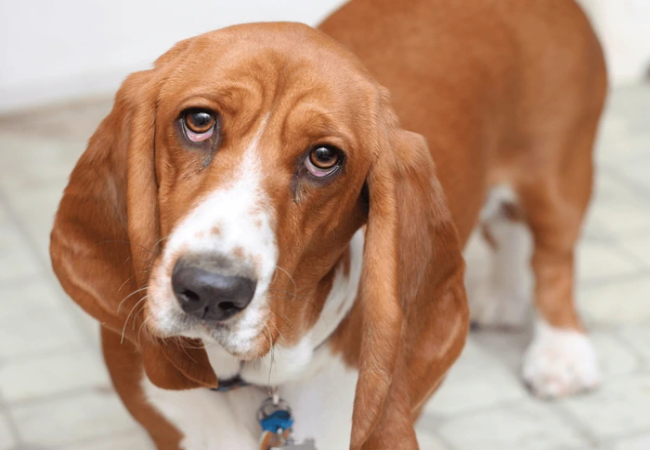Veterinary Guide to Ectropion in Dogs 2025 🐶🩺

In this article
Veterinary Guide to Ectropion in Dogs 2025 🐶🩺
By Dr. Duncan Houston BVSc
🔍 Introduction
Ectropion—where the lower eyelid rolls outward—is common in certain breeds and can lead to irritation, infection, or corneal damage. I’m Dr. Duncan Houston, BVSc, here to walk you through causes, diagnostics, treatment options, and prevention strategies to ensure your dog’s eye health in 2025. 🩺👁️
💡 What Is Ectropion?
- The eyelid droops outward (“rolled out”), exposing the conjunctiva.
- This exposure can cause dryness, conjunctivitis, keratitis, and corneal scarring, potentially painful and vision-impacting.
- Often affects the lower eyelid symmetrically; commonly diagnosed in dogs younger than one year.
🐾 Which Breeds Are Prone?
Congenital ectropion is inherited and most prevalent in breeds with loose facial skin, including:
- Cocker Spaniels, Bloodhounds, Basset Hounds, St. Bernards, Newfoundlands, Bulldogs, Chow Chows, Great Danes, Mastiffs, Bernese Mountain Dogs, Clumber Spaniels.
Acquired ectropion can arise from facial nerve paralysis, hypothyroidism, scarring, chronic inflammation, trauma, or following entropion surgery.
🚨 Symptoms to Watch
- Visible droop of the lower eyelid, with pink conjunctiva exposed
- Watery or mucoid discharge, tear staining beneath the eye
- Redness, swelling, rubbing, or pawing at the eye
- Dark pigmentation or ulceration of the cornea, if left untreated
🔬 Diagnosis Process
- A physical eye exam identifies outward eyelid roll.
- Fluorescein stain is applied to screen for corneal ulcers.
- Further testing (bloodwork, thyroid panels) is recommended for newly affected adult dogs to rule out underlying causes.
🛠 Treatment Options
Non‑Surgical Management
- Lubricating eye drops or gels to keep the eye moist.
- Topical antibiotics for infections or ulcers, e.g., Neo-Poly-Bac.
- Periodic cleaning with mild solutions to reduce discharge and irritation.
When Surgery Is Needed
- Canthoplasty or lid-shortening procedures correct droopy eyelids—typically performed by a general vet or ophthalmologist.
- Recommended for dogs with recurring conjunctivitis, corneal ulcers, or discomfort despite conservative care.
📈 Prognosis & Long-Term Outlook
With proper care, most dogs live happily and comfortably:
- Mild cases may require only periodic lubrication and monitoring—lifelong, but very manageable.
- Surgically corrected cases generally have excellent outcomes, with reduced risk of corneal damage.
- Without treatment, risks include chronic conjunctivitis and vision-threatening corneal lesions.
🛡️ Prevention & Owner Guidance
- For predisposed breeds, maintain gentle eye hygiene—clean regularly and monitor for redness or discharge
- Treat any eye irritation quickly to avoid reflex drooping
- Check for any facial paralysis, thyroid issues, or trauma if ectropion develops later in life
- Discuss surgery proactively if there are recurrent eye infections or corneal concerns
🔧 Recommended Tools & Services
- Ask A Vet App: 24/7 vet advice for eye concerns and treatment planning 📱
✅ Final Thoughts
Ectropion—while often benign—can lead to discomfort and progressive eye damage if left unchecked. With early detection, routine care, and surgical correction when necessary, most dogs enjoy normal vision and comfort. Use trusted platforms like AskAVet.com and supportive tools like Eyes Healthy in 2025 and beyond! 🐾❤️
Download the Ask A Vet app today for immediate expert guidance and preserve your dog’s eye health and quality of life. 🌟👁️






